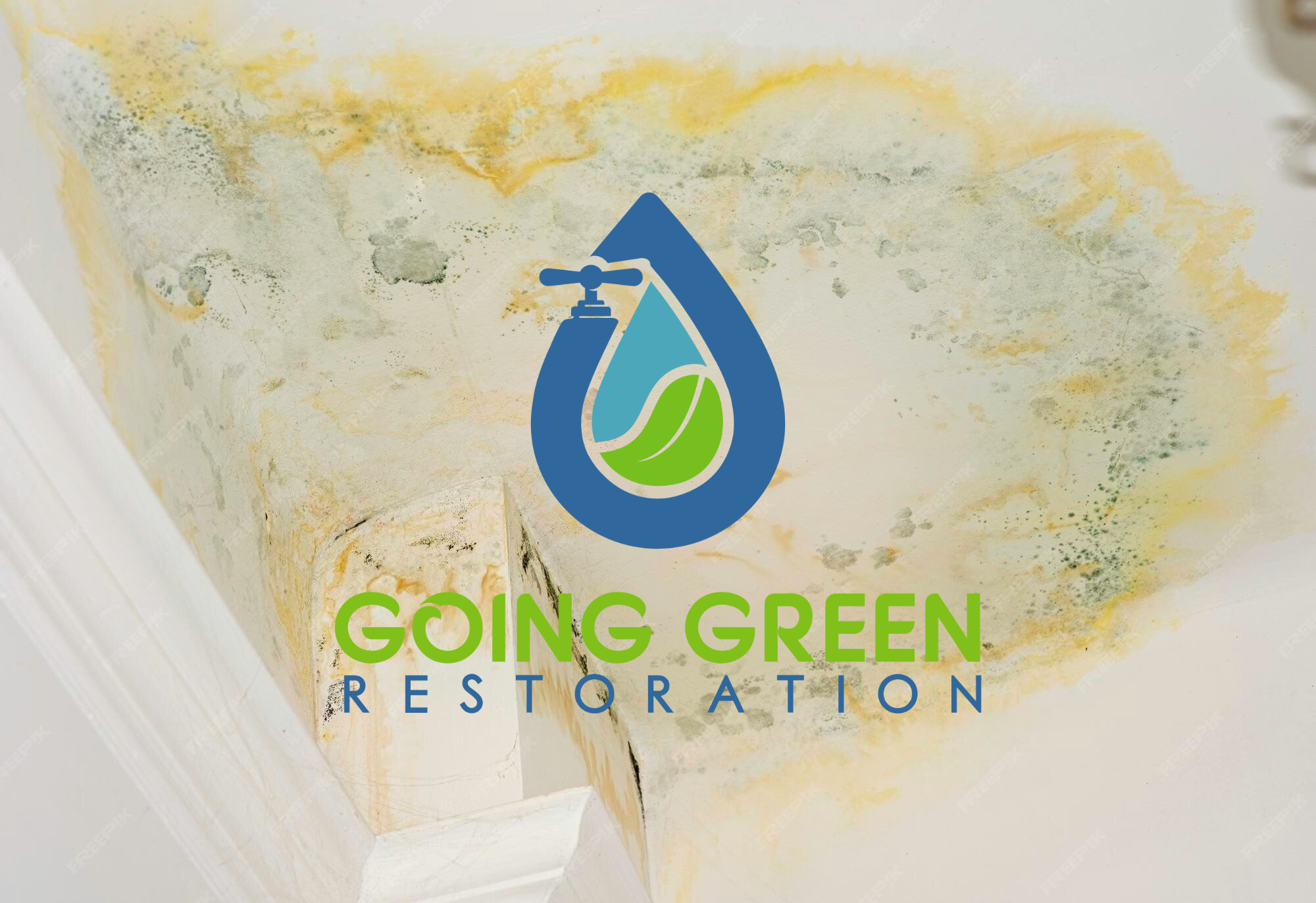Mold hidden behind walls is one of the most dangerous and expensive problems a Florida property owner can face. Unlike visible mold on surfaces, this type of contamination thrives silently, often spreading unchecked. Because it grows in dark, damp spaces, it can remain unnoticed for weeks or months, until health symptoms, odors, or structural damage appear. Mold spores can travel through the air and HVAC systems, contaminating indoor air quality and aggravating allergies, asthma, and other respiratory conditions.
In humid climates like Orlando, delays in dealing with mold can cause fast and costly consequences. Florida’s subtropical weather, frequent storms, and high moisture levels create ideal conditions for hidden mold to flourish behind drywall, insulation, or paneling. The longer it goes undetected, the more it undermines building materials, leading to warped walls, peeling paint, and compromised structural integrity.
This guide explains why immediate action is critical, how mold infiltrates wall cavities, and how professional Orlando mold removal services protect your health and property value. With expert intervention, you can prevent small issues from becoming large-scale restoration projects and ensure your home remains a safe, healthy environment.
Why Orlando homes are especially vulnerable to hidden mold
Florida’s warm, wet environment makes it a prime habitat for mold. The region’s subtropical climate means there’s almost always moisture in the air, and after heavy rains, plumbing leaks, or HVAC condensation, that moisture can easily become trapped behind walls. Combined with high humidity, this creates a perfect environment for mold to thrive, often without any visible signs until the damage becomes significant.
In Orlando, this issue is especially common. Whether it’s a beachfront condo or a commercial building, properties in Central Florida are prone to internal mold due to:
- Frequent storm activity and flooding, which introduces water into areas not designed to handle prolonged moisture exposure
- High indoor humidity levels, often above the 60% threshold where mold begins to grow rapidly
- Aging plumbing and HVAC systems that can leak or sweat unnoticed within wall cavities and ceilings
- Improperly sealed windows or roofs, allowing moisture intrusion during seasonal downpours or hurricanes
These factors combine to make mold hidden behind walls not just a possibility, but a common challenge for property owners throughout the region. Unfortunately, many homeowners and facility managers don’t notice the problem until it’s too late, when drywall begins to swell, paint starts bubbling, or musty odors fill the room.
If you’ve experienced water damage, scheduling Orlando water clean up & restoration is the first step in preventing mold growth. Timely intervention is essential to fully dry structural components, sanitize affected areas, and stop spores from colonizing hidden spaces.

The hidden dangers of mold in the walls
Mold behind drywall is dangerous because it spreads unseen, quietly invading spaces that are rarely inspected. Unlike surface mold, which can be cleaned and monitored, hidden mold often proliferates behind insulation, wooden studs, and vapor barriers, making it much harder to detect and eliminate. While it might not be visible, its impact on health and property can be severe.
You might not know there’s a problem until occupants begin experiencing:
- Chronic coughing or sneezing, which can worsen in specific rooms or after spending extended time indoors
- Asthma flare-ups, particularly in children or individuals with pre-existing respiratory conditions
- Sinus infections or skin rashes that appear without a clear source or persist despite treatment
- Fatigue or dizziness, symptoms often dismissed as stress or poor sleep but actually tied to air quality issues
These signs should not be ignored. The Centers for Disease Control and Prevention (CDC) confirms that mold exposure can worsen allergies and respiratory illnesses, particularly in sensitive individuals such as young children, the elderly, and those with weakened immune systems. In cases where symptoms persist without an obvious cause, mold inside walls is often the culprit.
Beyond health risks, hidden mold also threatens the integrity of your property. It feeds on organic building materials like drywall and wood, gradually weakening structures from the inside out. Left untreated, it can lead to costly repairs, compromised insulation, and even damage to electrical systems embedded in the walls.
Addressing mold behind drywall requires specialized tools, moisture meters, and often partial wall demolition to access and remediate contaminated areas. That’s why professional inspection and remediation are essential, not just for peace of mind, but for long-term health and safety.
Warning signs you may have hidden mold
Mold can be a silent intruder, developing quietly behind walls until it causes major damage or health issues. However, there are some telltale clues that can alert you to its presence early, if you know what to look for. Ignoring these early red flags can lead to more extensive contamination, structural damage, and expensive repairs.
Here are the top indicators that mold might be growing behind your walls:
- Persistent musty odor in one room or area, especially if it doesn’t go away after cleaning or airing out the space. This distinct smell often signals microbial growth hidden from plain sight.
- Peeling paint or bubbling drywall, which typically indicates trapped moisture behind the surface, an ideal condition for mold to spread.
- Visible water stains or dark patches on walls or ceilings that seem to grow or change over time, often a sign of ongoing leaks or condensation issues.
- Cold, damp walls that stay wet, even when the rest of the room feels dry. This suggests poor ventilation or hidden water intrusion behind the structure.
- Soft spots or warping on surfaces, which occur when mold breaks down wood and drywall materials from within, compromising their integrity.
These signs should never be ignored, especially in a humid environment like Central Florida. If you notice one or more of these symptoms in your home or property, it could point to a serious moisture problem that has already enabled mold to flourish.
If you see these signs, call for Orlando residential mold remediation immediately to prevent further contamination. Trained specialists can identify hidden mold using thermal imaging, moisture meters, and air quality testing, ensuring accurate diagnosis and safe, effective removal before the problem worsens.
Why professional help is critical
Mold behind walls is not a DIY job. While it may be tempting to investigate a suspicious odor or discoloration on your own, disturbing hidden mold without the right precautions can make the situation far worse. Cutting open drywall to check for mold without proper containment can release thousands of spores into the air, contaminating other parts of the home and putting your health at risk.
Professionals offering 24 hour mold removal services in Orlando are trained and equipped to handle these situations with precision and care. They follow strict industry protocols and use specialized equipment to manage mold safely and effectively. Here’s how expert remediation protects both your property and your health:
- Identify moisture sources with thermal cameras and moisture meters
Trained technicians don’t just look for surface-level damage. They use advanced diagnostic tools to trace hidden leaks, HVAC condensation, and areas of trapped humidity that fuel mold growth. Accurate detection ensures the root cause is addressed—not just the symptoms. - Contain affected areas using negative air pressure and HEPA filtration
Mold remediation teams set up containment zones using plastic sheeting, air scrubbers, and negative pressure systems to prevent spores from spreading during removal. HEPA filters trap even the smallest particles, protecting indoor air quality throughout the process. - Remove contaminated drywall, insulation, and wood safely
Materials that have been compromised by mold are carefully removed and disposed of according to environmental standards. This prevents spores from re-entering the living space and reduces the risk of regrowth in nearby areas. - Sanitize structural materials to prevent recurrence
Once the contaminated components are removed, exposed framing, subflooring, and other surfaces are treated with antimicrobial solutions to kill remaining spores. This critical step ensures the area is safe to rebuild and less likely to harbor future mold problems.
Attempting to handle hidden mold without the right training or equipment can expose your family to health risks, lead to incomplete remediation, and void insurance coverage. That’s why hiring professionals for 24 hour mold removal services in Orlando is the safest, fastest way to restore your home after a mold discovery, day or night.
What happens if you wait too long?
Mold issues don’t resolve themselves, in fact, they get exponentially worse the longer you wait. What begins as a minor moisture problem can evolve into a major hazard that compromises the health, safety, and value of your property. The consequences of delaying remediation are serious and often more costly than addressing the problem early.
Delaying mold remediation leads to:
- Higher restoration costs
What could have been a small localized cleanup can turn into a full-scale demolition and rebuild. Mold spreads rapidly through porous materials like drywall, insulation, and wood, increasing labor, material, and repair expenses the longer it’s left unchecked. - Widespread contamination in HVAC systems
Mold spores are microscopic and easily circulate through heating and cooling systems. Once inside your ductwork, they can spread throughout the entire building, contaminating air vents, filters, and every room connected to the system. - Structural rot or drywall collapse
Mold feeds on cellulose, the organic material found in wood framing and drywall. Over time, this weakens walls, floors, and ceilings, leading to sagging, buckling, or even collapse. Structural repairs can be extensive and costly, especially if framing or joists are compromised. - Declining indoor air quality
As mold spores multiply, they degrade air quality and trigger respiratory issues, especially for children, elderly residents, and people with asthma or allergies. Chronic exposure can cause long-term health effects and make living conditions unbearable. - Legal or insurance complications if tenants are affected
Property owners have a legal duty to provide safe living conditions. If tenants experience health problems due to mold exposure, it could lead to lawsuits, code violations, or insurance claims being denied, especially if the issue was ignored or mishandled.
The U.S. Environmental Protection Agency (EPA) warns that mold can take hold within 24–48 hours of water exposure. This means even small leaks, if not addressed promptly and thoroughly, can become a breeding ground for mold. And just because the leak is fixed doesn’t mean the danger is over. Even if the leak is fixed, mold will continue growing unless it’s fully removed.
Time is critical. Acting fast not only protects your health and property, but also minimizes financial and legal risks that grow with each passing day.
Where mold hides inside wall systems
Mold is a master of concealment, often growing in areas that are completely out of sight. Because it thrives in dark, damp environments, it can remain hidden for weeks or even months, quietly spreading and compromising both the structure of your home and the indoor air quality. Understanding where mold typically hides is crucial for effective remediation.
Professionals often find mold in:
- Behind drywall or paneling – Moisture trapped between wall layers creates the perfect breeding ground for mold colonies that remain invisible until structural damage or odors appear.
- Inside insulation – Fiberglass, cellulose, and foam insulation can retain water for extended periods, providing mold with a nutrient-rich environment to grow.
- Around wall studs and baseboards – Wooden framing absorbs moisture from leaks or condensation, which can lead to rot and hidden mold along support structures.
- Near plumbing penetrations – Pipes running through walls are common sources of leaks and condensation, allowing mold to flourish in concealed cavities.
- Inside shared walls in multi-unit buildings – Condensation or leaks from adjacent units can cause mold to develop in spaces that are not easily accessible, increasing the risk of widespread contamination.
If you’ve had a recent leak or flood, Orlando flood damage repair may be needed to prevent mold from taking hold in these hidden areas. Addressing moisture intrusion quickly ensures that mold does not establish itself behind walls, reducing the risk of structural damage, health issues, and costly remediation in the future.
Why timing matters in mold remediation
When it comes to mold, timing isn’t just important, it’s everything. The earlier you act, the more control you have over the outcome. Mold can begin growing within 24 to 48 hours of water exposure, and once it takes hold inside wall systems, it spreads quickly and quietly. That’s why early intervention is essential to minimizing both damage and disruption.
Early remediation reduces health risks, lowers costs, and limits material loss. Acting quickly can mean the difference between a localized cleanup and a full-scale gut-and-rebuild. The longer mold is allowed to grow, the more damage it does to drywall, framing, insulation, and even electrical systems. Beyond structural concerns, every day of delay increases health risks for occupants exposed to airborne spores and mycotoxins.
Services like water damage restoration in Orlando and 24/7 emergency restoration in Orlando provide the rapid response needed to stop mold before it spreads. These services focus on immediate containment, industrial drying, and moisture extraction—the key steps to halting mold before it can colonize hidden spaces behind walls and inside floors or ceilings.
With the right team in place, early remediation helps:
- Prevent the need for extensive demolition
- Reduce the scope and cost of repairs
- Maintain indoor air quality for your family or tenants
- Protect your property’s long-term value
- Ensure compliance with health and safety codes
Waiting too long can lead to avoidable complications—structural damage, higher repair bills, and increased liability. That’s why mold isn’t something to monitor—it’s something to solve, fast.

Extended Q&A Section
1. What should I do immediately after discovering water damage?
Shut off water sources, such as the main valve or appliance lines, to prevent further flooding. If it’s safe to do so, cut power to affected zones to avoid electrical hazards. Contact a professional restoration team right away to assess the damage and begin mitigation. In the meantime, use fans or dehumidifiers to start drying the area, and remove soaked materials like rugs, furniture, or drapes to prevent mold growth.
2. How can I tell if mold is present in my home?
Watch for signs like a musty odor, visible water stains, or allergic symptoms that flare up indoors. Mold often hides behind walls or beneath flooring, making it hard to detect without help. A professional inspection can confirm hidden growth using moisture meters and thermal imaging, tools designed to pinpoint damp areas and mold colonies behind surfaces.
3. How long does professional water damage restoration take?
The timeline varies depending on the extent of the damage, but most jobs take 5–14 days. This includes the drying process (usually 3–5 days) and any necessary structural repairs like replacing drywall, insulation, or flooring. Timely action can speed up recovery and reduce repair scope.
4. Why is quick mold removal important for my health?
Mold reproduces by releasing microscopic spores into the air. Mold spores affect air quality and can aggravate asthma, allergies, and other respiratory conditions, especially in sensitive individuals. Removal reduces exposure risks, making your home safer and preventing chronic health symptoms linked to poor indoor environments.
5. What’s the difference between water mitigation and water restoration?
Water mitigation is the emergency response, stopping water intrusion, extracting water, and stabilizing the site with drying equipment. Water restoration goes further by repairing damage, replacing materials, and often includes mold remediation. Both are essential parts of a comprehensive recovery plan.
6. Can water damage lead to structural problems?
Absolutely. Water seeps into drywall, subfloors, framing, and ceiling joists, weakening the structure over time. Moisture weakens framing, drywall, and flooring, which can lead to collapse or rot if left unaddressed. This is especially risky in load-bearing walls or multi-story homes.
7. How do I prepare for a 24/7 emergency restoration service visit?
Before the crew arrives, clear access to affected areas by moving furniture and personal items. Document damage with photos or video for insurance purposes. Secure pets, and inform the team about utility shutoff locations, ongoing leaks, or any health concerns like asthma or immune conditions that could affect remediation protocols.
8. What are the most common causes of water damage in Orlando homes?
Orlando’s climate and weather patterns make certain risks more prevalent. Common causes include:
- Storms and flooding during hurricane season
- Plumbing failures, like burst pipes or supply line leaks
- Blocked gutters, causing water to pool near foundations
- Leaking HVAC systems, especially in attics or wall cavities
- Roof damage from wind, hail, or aging materials
Preventative maintenance can help reduce these risks.
9. How does insulation play a role in water damage prevention?
Dry, well-installed insulation acts as a barrier against temperature changes that cause condensation. It also helps control indoor humidity. However, if insulation becomes saturated, it loses effectiveness and promotes mold growth. Wet insulation should be removed during remediation to ensure the area stays dry and healthy.
10. How can I maintain my property to prevent future water or mold issues?
Prevention starts with consistent upkeep:
- Inspect your roof, plumbing, and HVAC regularly for leaks or signs of wear
- Maintain gutters and downspouts to redirect water away from your foundation
- Seal windows and doors to prevent moisture intrusion
- Control indoor humidity below 50% with dehumidifiers or proper ventilation
- Schedule annual checkups with a trusted restoration or home maintenance service
These steps protect your investment and reduce the likelihood of recurring issues.
If you suspect hidden mold or recently experienced water damage, don’t delay, mold spreads quickly and can lead to severe structural and health problems if left untreated. At Going Green Restoration USA, our certified experts are available around the clock to assess, contain, and eliminate mold at its source.
We use advanced diagnostics, industrial-grade drying equipment, and proven remediation protocols to ensure every affected area is treated thoroughly and safely. Whether you need Orlando residential mold remediation, 24 hour mold removal services in Orlando, or Orlando flood damage repair, we’re here to help, fast.
Connect with trusted professionals at Going Green Restoration USA to protect your property and restore safe indoor air.





